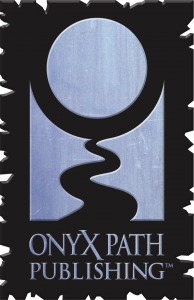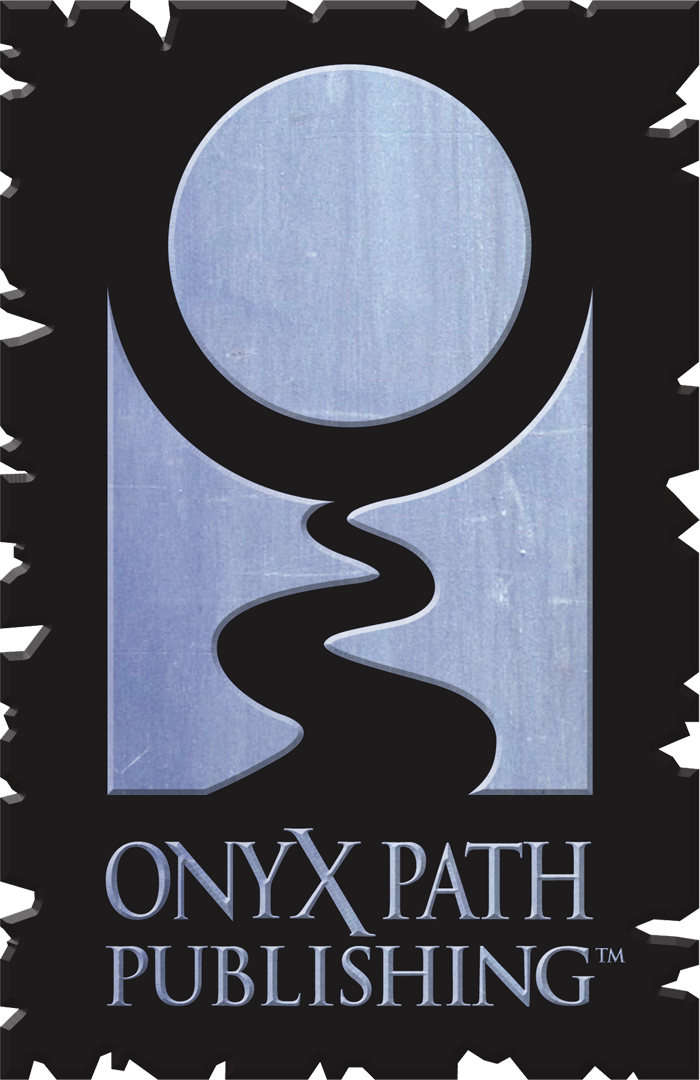
Sometimes video games ruin you.
I’m not talking about the kind of things your mom always told you would ruin you. Instead, I’m talking about how working in video games ruined me. You see, there’s an informally standard way of pitching an idea in video games, called a “pitch deck.” And I’ve seen or made so many of them that when Rich and I first discussed the idea of opening up Onyx Path to new game pitches, we didn’t give any guidance on that front. “Surely everyone knows what a pitch is,” I thought.
Which was not only foolish on my part, but also a really terrible idea, because the way pitch decks are written for video games is kind of dumb to apply to RPGs when you think about it.
I won’t go into the details — if you’re interested, you can go to Game Dev Postmortem and get a good breakdown of how video game pitches work. Instead, let me pull the bits that make sense for a tabletop RPG, and give you some advice on what works best if you want to pitch a new game idea to Onyx Path.
Hook
Start with the hook. Give us a sentence that tells us in a few seconds what’s the biggest selling point of the game. Sometimes this gets called the “elevator pitch,” for the hypothetical scenario where you have a producer in an elevator and you need to pitch the idea before they get off at their floor. (Side note: Don’t pitch your game to us if we’re in an elevator with you. It’s just an expression.)
For example, Pugmire‘s hook was “It’s D&D, but you play dogs.”
Product
Follow up with a paragraph or two describing why your game is special. Summarize the genre, gameplay, mechanics, and basic setting. Be succinct here — you want us to get excited about the idea, and if we are, we’ll ask for more details later.
For example, the start of Pugmire’s product writeup was “Pugmire is a fantasy world with dogs as the main characters. The system will use the D20 OGL SRD as a basis. This will evoke the classic fantasy flavor that we’re emulating (and ultimately distorting), and it is comfortable and familiar to many tabletop gamers.” I went on from there, but you get the idea.
Business Plan
The part that a lot of pitches miss is the business plan. Just saying “Onyx Path will make a great game that everyone will enjoy” tells us nothing. In the end, you want to answer the question “Why should Onyx Path make this game?” Here are some questions to answer in your business plan:
- How complete is the product?
- Who will own the IP, art, final game, and so on? (For example, these can be divided up between Onyx Path and the game creator.)
- Will Onyx Path have exclusivity? In what areas?
- What sort of payments or royalties do you think Onyx Path should get? How much would you get? (Market research is great, but even something like “OPP gets 25% of earnings” is enough to start a conversation.)
- What other business plans already exist for this IP? (It’s fine if the answer is “none,” but it’s good to know ahead of time if you’re already making, say, a comic book based on your game.)
- Have you invested any money into this product already? If so, how much and in what areas? (For example, have you paid for art or diversity consultants?)
Market
Finally, talk about the market. We need to know what environment we’d be launching this game into. Here are some questions to answer:
- Who is the target audience? (Don’t say “everyone” – the classic World of Darkness audience, for example, is different from the D&D 5th edition audience.)
- Are there competing products in this space? What strengths do they have that we should be aware of?
- What’s this product’s competitive advantage?
- Why should we make this game now?
Format
There’s no formal structure for these kinds of things. Sometimes we get a PDF of a Powerpoint presentation. Other times we get a Word document. No matter what, though, there are a few guidelines that will help.
- Make it a distinct file. Sharing and commenting on a file is much easier than passing around a long email.
- Make it short. I often say “a few pages” as a metric, but a Powerpoint or a file full of art references will naturally be longer. But it should be able to be read and understood in a few minutes. The goal isn’t to cover absolutely everything, but to give us enough information to get us interested and let us ask more questions or get to a meeting to talk in more detail.
- Make sure you fill out the disclosure form. I know it looks scary, but there’s a chance the game you’re pitching is close to something we’re already working on. We can’t look at your idea until we have protection from someone claiming we stole their idea.
- Give us a minute. It might be a while before we get back to you. Unlike freelancer submissions (which are evergreen and we keep on file in case at some point we decide to use your services), we do try to get back to you one way or another. But it’s possible that we’re talking over a similar project with someone else and are waiting to see how that pans out before we talk to you, or we’re stuck under an NDA and can’t give a formal acceptance or refusal until that expires. Or we’re just busy. It’s okay to poke once in a while, but it doesn’t necessarily make the conversation go faster.

Thank you Eddy – I really enjoy background info like this! I feel a bit like being part of the Onyx Path family when I understand better what’s going on internally.
Have you ever asked Paradox if you are allowed to post a process description like this for the approval process with them ?
Probably even with a comment from their side on how the decision process is happening at their side…
A description like this would probably help to ease the waves a bit and make them look less like a blocker to all the wonderful game line they own the rights to.
Regards
Ferdinand
I feel really uncomfortable posting another company’s processes.